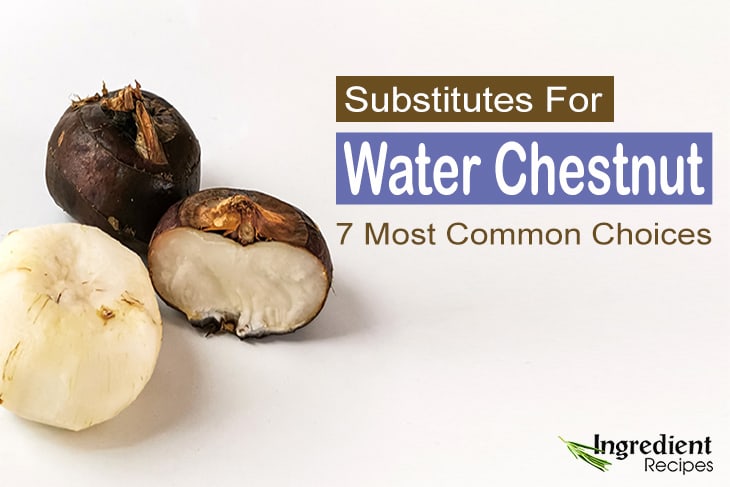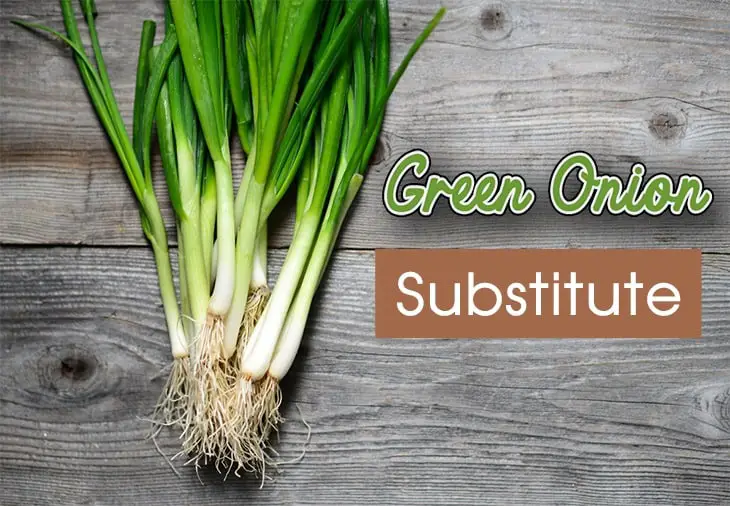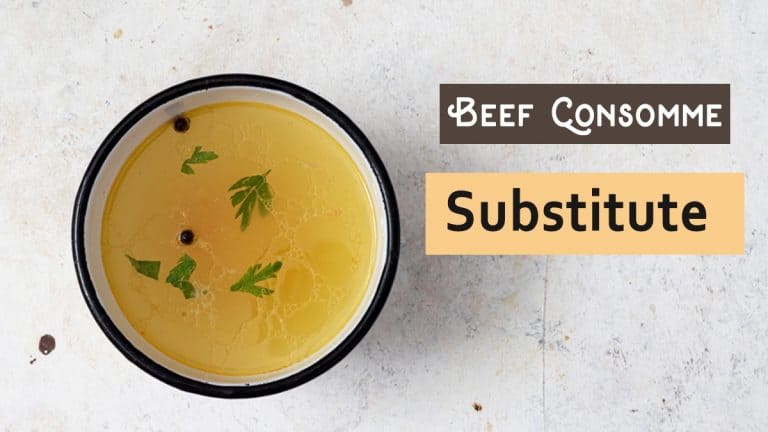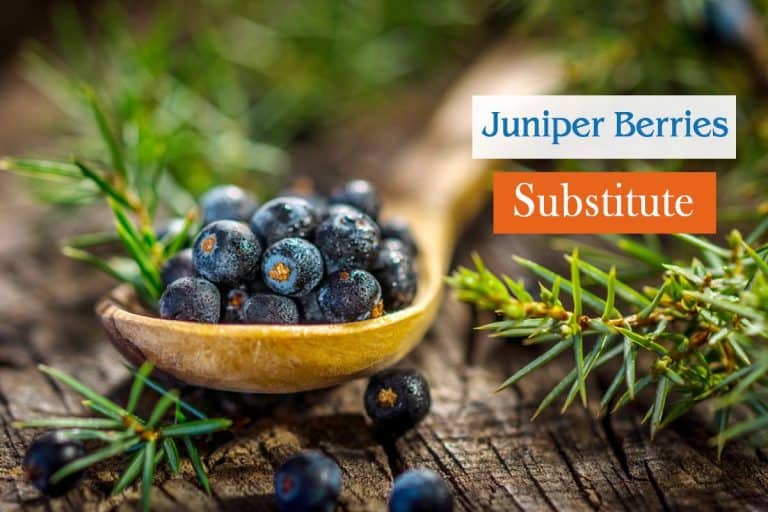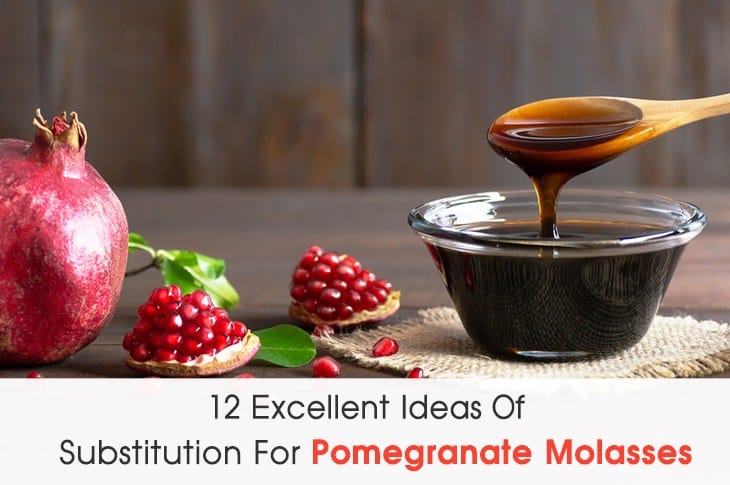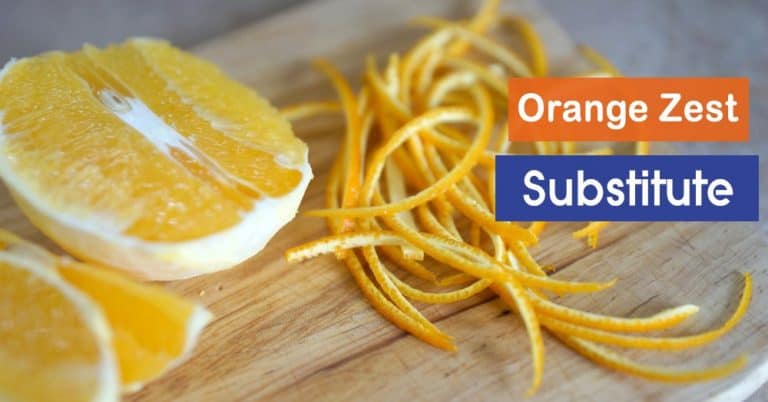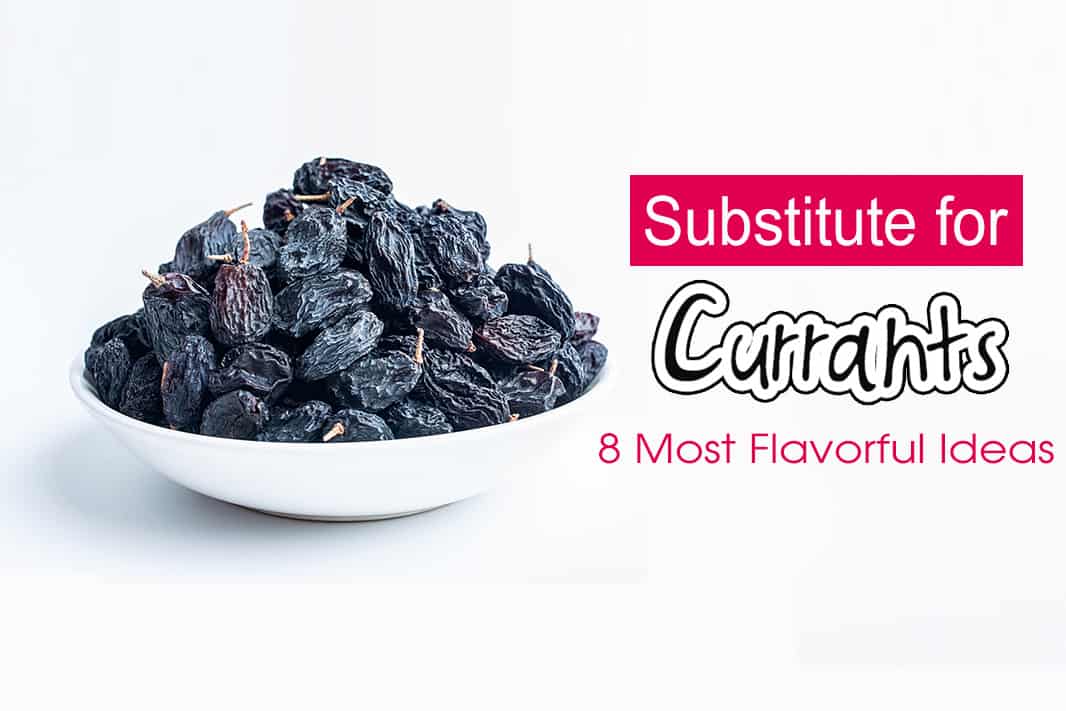
There are times you may need to get a substitute for currants – the common name of dried Corinth grapes in the US and the UK.
They are popular ingredients in muffins, stuffings, cereals, or just as a healthy snack. These sweet fruits can even bring an interesting addition to some savory dishes as well.
Unfortunately, the supply of currants is not always abundant in many places. However, don’t panic when you’re making some puddings and find out your local grocery has run out of these dried fruits. There are so many alternatives that can act as a stand-in.
List Of 8 Best Substitutes For Currants
Here is a quick rundown of the healthiest substitutes that can bring a similar flavor and texture as currants.
1. Raisins
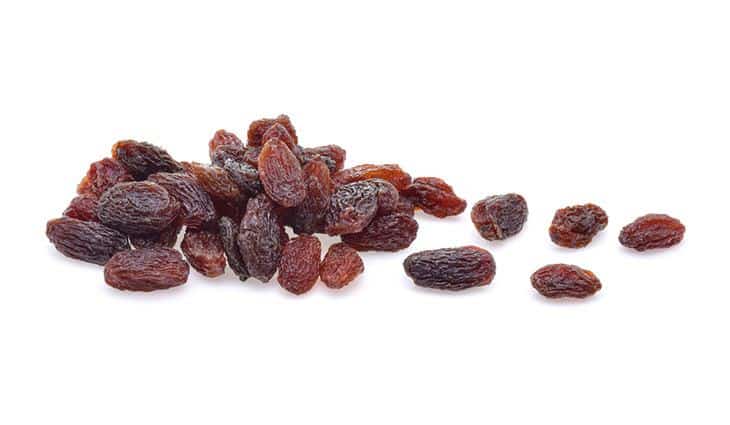
As Zante currants are also just a type of raisin, it’s not surprising that we can use other dried grapes when currants aren’t available.
Currants and other raisins are very similar. Both are grapes that go through a dehydrating process to achieve a concentrated flavor and a longer shelf life.
Raisins offer plenty of choices to fill in for currants in your recipes. They come in various colors including dark purple, green, red, yellow. If you’re seeking not just the sweet taste but also some additional colors to brighten your dish, then look no further.
Like Zanter currants, other types of raisins are just as nutritious.
As dried grapes, they are a great source of potassium and iron while low in cholesterol and fat – all good things for your digestive health. In the dehydrated form, they might contain more sugar, but you will benefit from the extra amount of fiber as well.
Besides eating them as a healthy snack, you can add raisins to sweet and savory dishes, such as fruit cakes, Raisins and Pinto Beans Muffins, oatmeal and pudding.
Note: click here if you also happen to find a substitute for pinto beans.
You can use different types of raisins interchangeably in most recipes. However, keep in mind that they don’t always result in the same flavor as the original recipe.
A lot of places these days sell organic raisins. They are a great purchase if you want to avoid pesticide residue of some raisins that have not been properly processed.
For those who are allergic to sulfite, read the package label carefully, though golden raisins are usually the only type that may contain sulfites.
It’s always better to plump raisins before use. Soak them in either hot water or the recipe liquid for about 15 minutes until the raisins entirely pump up.
One of the situations where raisins aren’t that good as a substitute is when you need to chop them. Many raisins are relatively bigger than Zante currants, requiring you to freeze them or heat the knife first.
2. Dried Dates
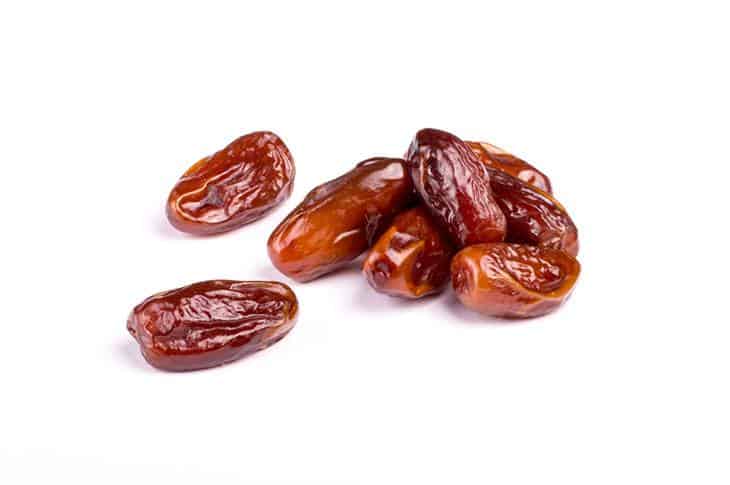
Dried dates are another amazing option to replace currants in your dishes.
First cultivated in Mesopotamia and Egypt in ancient times, dates have long been a staple in Middle Eastern cuisine. But nowadays, you can find it in many corners of the world as well.
The package label might indicate the type or just say “dates” without specifying which variety inside. Deglet Noor and Medjool dates are the two most common in the US.
Medjool is softer and larger than others. They are sweet and moist and usually have a brown color. On the other hand, Deglet Noor is drier and firmer with a slightly nutty taste.
Dried dates are a quick source of energy like other dehydrated fruits. They have plenty of potassium – an important mineral for athletes to balance their bodies’ fluids. These fruits are also rich in calcium, protein, iron, vitamins A, and C with almost no fat.
As a natural sweetener, you can use dates in place of currants when making jams. With a unique aroma, they also have an honored place in desserts like cakes, stuffed pastries, and pies. Outside of North America, you can find dates in curries, couscous dishes, and salads.
Chopping sticky dates is tricky, and in most cases, a pair of kitchen shears works better than a knife. You can also dip the blade in flour or warm water periodically to avoid further sticking.
3. Dried Cranberries
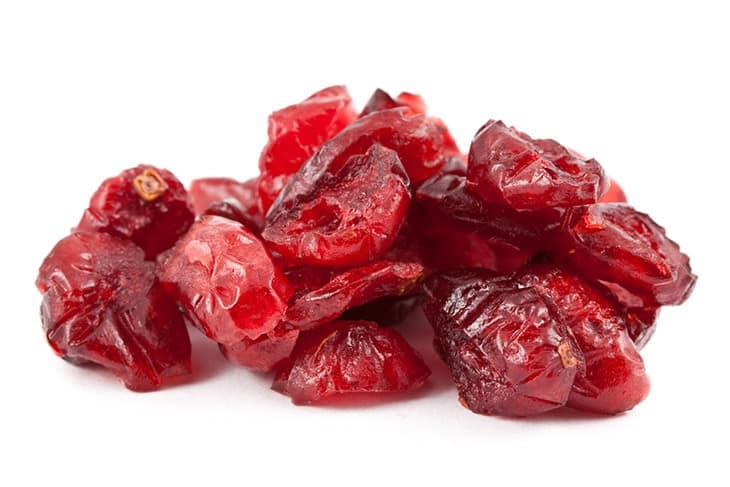
Cranberries are the closest brother currants can get. In terms of appearance and flavor, these fruits almost resemble each other. Cranberries already have a place in plenty of recipes, so filling them in for currants should pose no issue.
The best part about these dark red berries is that they are one of the healthiest fruits around. They are low in carbohydrates, sugar, and calories but loaded with antioxidants and vitamins.
The amount of antioxidants in cranberries is five times greater than that in broccoli, for instance. These fruits help to improve circulation and boost your immune system. They also lower the level of bad cholesterol and prevent urinary tract infections.
No matter how you intend to cook cranberries, they are always a cheat code to elevate the flavor of your dishes. Cranberries are popular ingredients for holiday meals like Thanksgiving, where people usually spice up the turkey with cranberry sauce.
But the capabilities of cranberries don’t stop there. We have cranberry stuffing, cranberry rice salad, cranberry pie, dried cranberry and green onion dip, and cranberry bars, among others.
Note: here are some suggestions if you need a substitute for green onion.
Avoid soft or shriveled cranberries when buying these fruits. Looking for firm, unbrushed cranberries instead, even when they are already prepackaged.
Wash them and discard any decaying or bruised cranberries before use. If you store them properly, frozen cranberries can last for up to a year.
4. Prunes

In American culture, prunes bear an image problem as they’re often associated with the woes and infirm of the elderly.
However, they are a common ingredient in both meat dishes and desserts in European and Middle Eastern cuisine. If you could get over this unfair association, prunes make a great substitute for currants in many recipes.
They are just another dried fruit, made from black or dark purple plums instead of yellow or red varieties. At the end of the dehydrating process are a chewy texture and a soft sweet flavor.
Even in the dried form, prunes are still rich in vitamin B, C, K, and potassium. The high fiber content in these fruits is beneficial to improve your digestive tract.
Prunes are versatile to appear in a wide range of recipes, including cakes, tarts, and meat dishes like braised pork or roast turkey.
And of course, the stewed prunes are always sweet and tasty, a perfect topping for baked dishes, ice creams, yogurt, and bread.
If you have unpitted prunes, remove the stones with a small knife. Also, remember to soak them into the water, orange juice, or wine if you aren’t planning to use them in a dish with liquid.
5. Dried Apricots
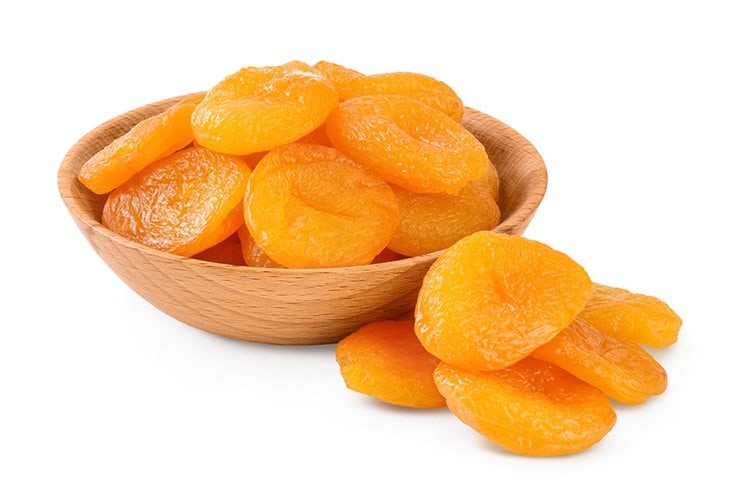
Dried apricots will serve you well as a replacement for dried currants. With a sweet flavor, you can cook them into amazing baked goods. This is especially true for muffin toppings and cakes, where currants are a common ingredient.
Apart from confections and desserts, you can also try dried apricots with savory dishes such as poultry and lamb. Once cooked, this healthy substitute produces pleasant sweetness that makes an interesting contrast to spicy and savory ingredients.
Like fresh apricots, the dried ones are a good source of antioxidants, including vitamins A, C, E, and beta carotene. These fruits consist of flavonoids, a group of antioxidants that can help protect you from illnesses like heart disease and diabetes.
Add some flour to dried apricots when chopping them in a processor to make them less sticky. If you’re planning to chop them by hand, it is advisable to oil the blade of your kitchen shears or knife first.
6. Dried Blueberries
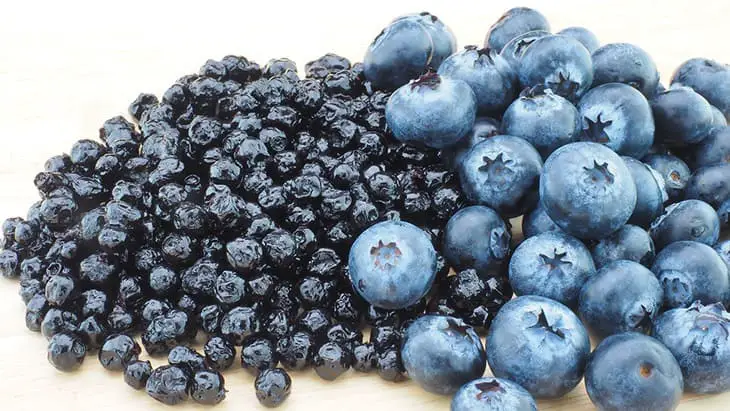
Another type of berry that rarely disappoints as an alternative to currants is blueberries. This is also a chance to incorporate more blueberries, a healthy fruit, into your diet.
Low in calories and rich in vitamin C and antioxidants, blueberries always do wonder for your eyes, digestive system, and heart.
The gentle sweetness of these dried fruits works amazingly in baked goods. Additionally, this tasty treat works well in trail mix, granola, as a topping, or simply just a snack.
The intense sweetness and fun texture of dried blueberries also bring another flavor into your salads. They can bring the best out of vinegar-based dressings by balancing their tangy flavor.
Cooking with these dried fruits is not too difficult. Just add them as you always do with currants or rehydrate them in water if your recipe requires fresh fruit.
If you’re planning to dry blueberries yourself, don’t raise the temperature too much to speed up the process. Doing so may risk burning them on the outside.
7. Dried Cherries
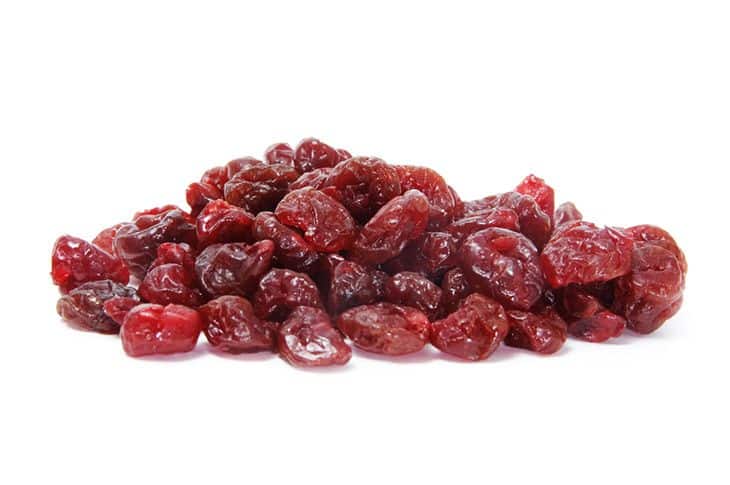
Dried cherries are not everyone’s cup of tea. Many love them, while some have issues with them. But if you find ordinary dried cherries pleasant enough, they are a decent replacement for currants.
Dried cherries are still a popular ingredient in desserts and baked foods. Their taste bears some resemblance to that of currants. The biggest difference is their physical appearances. While dried cherries have a bright red color, dried currants are considerably darker.
For example, you can try dried cherries instead of dried currants when your ice creams or desserts need topping, or you’re making some jams.
They also add a strong, sweet-tart flavor to muffins, pastries, and cereal bars. Additionally, don’t limit yourself and try something new like Dried Cherry and Shallot Confit or Turkey and Dried Cherry Salad.
Dried cherries are a healthy snack, like most dried fruits. They contain a great number of vitamins, especially provitamin A, iron, calcium, and minerals. Just one cup can provide enough of the recommended daily intake of provitamin A.
Use an oiled knife to make the chopping easier. If you have opened your dried cherries box, keep it in a cool and dry place. As they don’t have strict storage requirements, you can use them for up to 12 months once opened without freezing.
8. Jujubes

Also known as Chinese dates, jujubes might be unfamiliar to people outside of Asia. However, this should not keep you from letting them stand in for currants in your dishes.
Aside from being a delicious, healthy snack and an ingredient featured in many recipes, jujubes also come with numerous impressive health benefits.
These fruits are commonly used in China and Korean traditional medicine, where people believe they can relieve stress and alleviate inflammation.
It doesn’t matter if you’re convinced by these assumptions or not, jujubes are still a good source of vitamins, minerals, phosphorus, and calcium. They are also packed with fiber in both fresh and dried forms.
Died jujube fruits have the same look and flavor as dates, so if you’re familiar with using dried dates in place of currants, it will be easy to do so with jujubes.
They work great with sweet and savory dishes, from soup, sauces, jams, desserts, to compotes. If you stew them for a long time, jujubes will break down nicely, making them a perfect topping for soups or a dessert filling.
However, as fresh jujubes don’t closely resemble the taste of currants (they aren’t as juicy), they are less popular than dried ones as an alternative to currants.
You can pair them with nuts, such as walnuts, pistachios, and almonds, and sweeteners like honey, chocolate, and sugar. Oranges, cream cheese, and coconut also go well alongside jujubes.
Frequently Asked Questions
We know that many fruits in this article may be confusing due to their similar appearances and flavors. These are some common questions that could help you understand these fruits better and choose the best ingredient for your dish.
What Is The Difference Between Currants, Raisins, And Sultanas?
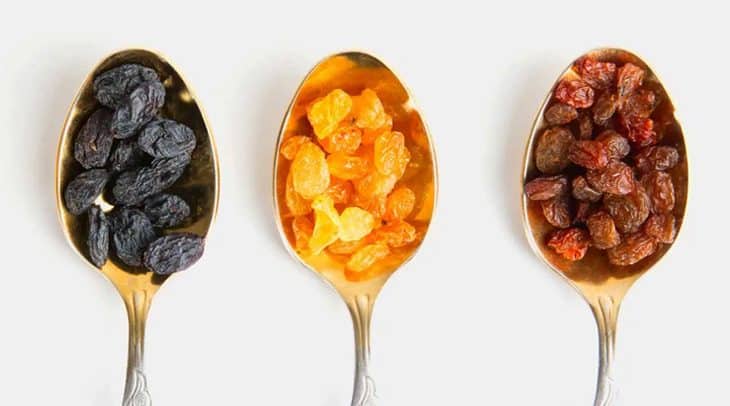
The currants we’re talking about here are Zante currants, the dried Black Corinth grapes. They are small, dark, and seedless grapes that have their origin in Mediterranean cuisine.
Dried currants are just one type of raisins, which is simply the umbrella term for all kinds of dried grapes. People in the UK and Ireland also use the word “raisins” for large, dark-colored grapes, while “sultanas” is another name of white dried grapes.
What Is The Difference Between Zante Currants And The Fruit Currant?
You should be aware of another common misconception in cuisine, where a name may be used for different yet similar things. The term “currants” is also the name of some members of the Ribes family, including red currants, white currants, and black currants.
These flowering shrubs thrive in northern climates, including the UK, the Netherlands, Germany, Denmark, and North America. While dried black currants may look similar to Zante currants, they are smaller and have a distinct berry flavor.
What Are The Health Benefits of Currants?
Dried currants, just like other raisins, are famous for their ability to improve our digestive system. Besides, they help balance blood pressure and alleviate inflammation.
However, it should be noted that you should consume dried currants in moderation due to the high amount of sugar and calories in them.
Keep this word of caution in mind whether you eat them as a snack or use them as an ingredient in your recipes.
How Much Should I Use Other Ingredients In Place of Currants?
In the case of blueberries, you generally don’t need to make any adjustments. However, with dried cherries, raisins, cranberries, and especially dried apricots, you may need to chop them into smaller pieces before use.
Final Words
There is a wide variety of similar dried fruits that can deliver the same flavor and texture. Thus, it’s hard to run out of options when you need to substitute currants. The most suitable choice will depend on which kind of recipe you’re making.
Raisins work amazingly with bread and pastry toppings, while cranberries would be a great choice if you want to make jellies or rice salads. Whatever you choose, they all work well as a substitute for currants with some tweaks.

